Company Profiles & Analysis
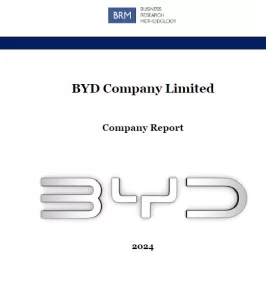
Founded in 1995, BYD Company Limited is a leading technology company that has established itself as an industry leader in electronics, automotives, renewable energy, and rail transit. As a global leader with more than 30 industrial parks across 6 continents, BYD’s zero-emission solutions, focused on energy generation and storage, are expansive and widely applicable. The electric automaker sold 26,864 million units of cars in 2022 , generating operating revenue of RMB 424,061 million, an increase of 96.20% compared to the previous year. The company delivered a record high of 1,788,000 new energy vehicles in 2022, representing a year-on-year growth over 217.6% . The electric vehicle (EV) giant pursues a business strategy of cost leadership fuelled with extensive vertical integration and an accelerated pace of new model development. BYD organizational structure integrates the elements of matrix structure, independent brands, emphasis on R&D and regional variations. Organizational culture of the EV behemoth, on the other hand, is associated with meritocracy, focus on cost-cutting and prioritizing company values. As one of the leading rechargeable battery manufacturers in the global arena BYD possesses certain strengths such as vertical integration and cost advantage, leadership in technological capabilities and economies of scale advantage from massive manufacturing. At the same time, the company has certain weaknesses. These include overdependence on domestic market, too broad range of businesses and dependence on subsidies by Chinese government to sustain cost advantage. BYD Company Limited Report contains the application of the major analytical strategic frameworks in business studies such as SWOT, PESTEL, Porter’s Five Forces, Value Chain analysis, Ansoff Matrix and McKinsey 7S Model on BYD. Moreover, the report contains analyses of BYD’s business strategy, leadership and organizational structure and ecosystem. The report also analysis marketing strategy, ecosystem and discusses the issues of corporate social responsibility. 1. Executive Summary 2. Business…
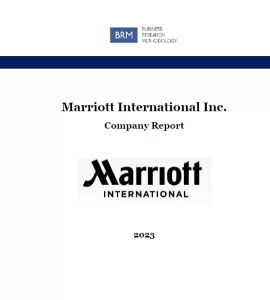
Marriott International is a worldwide operator, franchisor, and licensor of hotel, residential, timeshare, and other lodging properties in 138 countries and territories under 30 brand names. Started as a root beer stand in 1927 in Washington D.C., USA, Marriott has grown into the largest hotel chain in the world. For the full year 2022, gross fee revenues totalled USD 4.1 billion, a significant increase of more than 50 percent compared to 2021. Adjusted EBITDA reached nearly USD 3.9 billion in 2022, up almost 70 percent year over year. Full year adjusted diluted earnings per share (EPS) more than doubled from 2021, totalling USD 6.69. In 2022, Marriott International grew from 7,989 properties (1,479,179 rooms) at year-end 2021 to 8,288 properties (1,525,407 rooms) at year-end 2022, reflecting gross additions of 394 properties (65,376 rooms) and deletions of 94 properties (19,079 rooms), including the impact of the Company’s decision to suspend its operations in Russia. Marriott business strategy integrates pursuing asset-light business model and growing through acquisitions. Moreover, the largest hotel chain in the world focuses on increasing customer segment known as “bleisure travellers”. CEO Anthony Capuano and senior management pursue servant leadership style and the hotel chain has a hybrid organizational structure that combining elements of matrix and functional structures. Marriott International Inc. Report contains the application of the major analytical strategic frameworks in business studies such as SWOT, PESTEL, Porter’s Five Forces, Value Chain analysis, Ansoff Matrix and McKinsey 7S Model on Marriott. Moreover, the report contains analyses of Marriott’s business strategy, leadership and organizational structure and ecosystem. The report also analysis marketing strategy, ecosystem and discusses the issues of corporate social responsibility. 1. Executive Summary 2. Business Strategy 3. Marriott Stock Performance Analysis 4. Leadership 5. Organisational Structure 6. Organizational Culture 7. Marriott and Ansoff Matrix 8. SWOT Analysis…
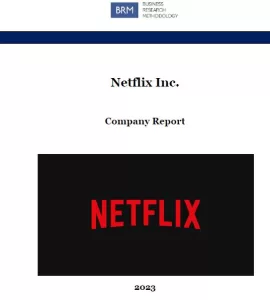
Netflix Inc., the largest streaming service in the world, was incorporated on August 29, 1997 and began operations on April 14, 1998. The entertainment services provider has 231 million paid memberships in over 190 countries. The company employs about 12,800 people in more than 25 countries. Consolidated revenues for the year ended December 31, 2022 increased 6% as compared to the year ended December 31, 2021, due to the 6% growth in average paying memberships and a 1% increase in average monthly revenue per paying membership. Netflix business strategy involves prioritizing revenues maximization over membership growth and increasing investments on original content. Moreover, the streaming service has decided to stay focused on movies, series and documentaries not entering news and live sports segments. The on-demand media provider had change of leadership in 2023 with co-founder Reed Hastings stepping down from the role of co-CEO and Ted Sarandos and Greg Peters becoming new co-CEOs. The largest streaming service in the world has flat organizational culture and its organizational culture has been a subject of case studies in business schools for its unconventionality and effectiveness. Specifically, Netflix organizational culture effectively encourages decision making by employees at all levels and the company has taken information sharing to a whole new level. The popular streaming platform despises rules and communication practices there are candid and direct. Along with its obvious strengths such as first mover advantage, quality original content and global presence, the entertainment services provider has certain weaknesses as well. Namely, Netflix has high level of indebtedness and its business model depends on other companies. Furthermore, the company is over-dependent on North American home market and there is a room for improvement on its customer services. Netflix Inc. Report contains the application of the major analytical strategic frameworks in business studies such as…
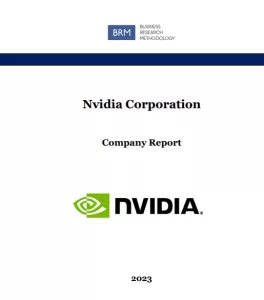
Founded in 1993 by Jensen Huang, Chris Malachowsky and Curtis Priem, Nvidia Corporation is the multinational technology company that aims to solve the world’s visual computing challenges. The GPU maker is the 7th largest company in the world with a market cap of around USD 1 trillion. For fiscal year 2022 the revenue was a record USD 26.91 billion, up 61 percent from USD 16.68 billion a year ago. Gross margins expanded to 64.9 percent, and earnings per share were USD 3.85, up 123 percent from a year ago (Annual Review, 2022) Nvidia business strategy involves benefiting from the first mover advantage, prioritizing performance of products over their costs and pursuing vertical integration. The company’s co-founder and CEO of 30 years Jensen Huang is famous for his charismatic leadership style and his ability to inspire and motivate his team. The multinational technology company has functional and hybrid organizational structure and divides its business practices into various functions such as engineering and product development, supply chain and operations, human resources, finance and accounting and legal and compliance. Nvidia organizational culture integrates the elements of innovation, intellectual honesty, high performance and inclusion and diversity. Within the framework of Ansoff Grow Matrix the company uses all four growth strategies – market penetration, product development, market development and diversification in an integrated manner. The world’s most valuable semiconductor company possesses certain strengths such as global leadership in GPU market, unique position to benefit from the increasing popularity of artificial intelligence (AI) and more than 370 partnerships revolving around self-driving cars. Furthermore, Nvidia possesses advanced R&D capabilities and these allowed the company to reach its current state. At the same time, the software and fables company has serious weaknesses that need to be addressed. At the moment Nvidia depends on a single type of product…
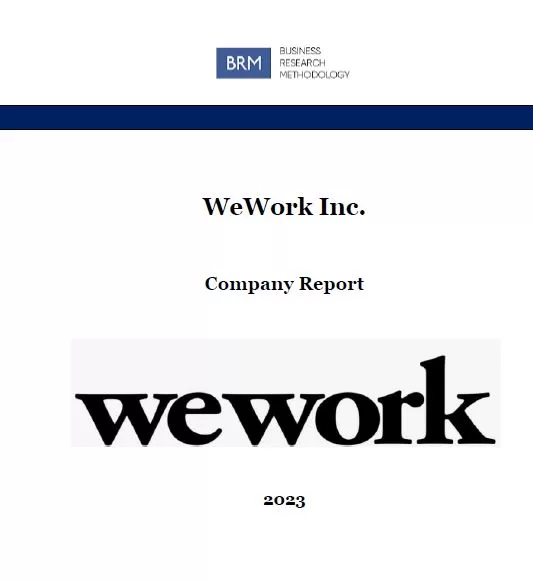
Founded in 2010 in Manhattan USA by Adam Neumann and Miguel McKelvey, WeWork Inc. is a global flexible workspace provider that comprises a network of 756 locations in 38 countries. The co-working giant has approximately 590 thousand physical memberships as of December 2021 (Annual Report, 2021). In the US in 2021 WeWork represented approximately 0.5% of all commercial office space and 63% of Fortune 100 companies are WeWork members WeWork’s mission is to empower tomorrow’s world at work. The workspace provider has a business strategy of digitalizing the real estate business and offering space as a service. The company had severe leadership and ethical challenges under controversial co-founder and the first CEO Adam Neumann, but the current CEO Sandeep Mathrani is bringing discipline and maturity to the leadership. The hierarchical organizational structure of the company has allowed Mathrani to turn around the business to a certain extend via reducing operational costs and focusing on the core business. The co-working and office space operator has considerable strengths such as solid international presence, brand recognition and experience in its niche. At the same time, WeWork has certain serious weaknesses that include the absence of profitability and high level of indebtedness. Moreover, WeWork brand image has been severely damaged due to management and ethical issues under the leadership of Adam Neumann as discussed throughout this report. WeWork Inc. Report contains the application of the major analytical strategic frameworks in business studies such as SWOT, PESTEL, Porter’s Five Forces, Value Chain analysis, Ansoff Matrix and McKinsey 7S Model on WeWork. Moreover, the report contains analyses of WeWork’s business strategy, leadership and organizational structure and ecosystem. The report also analysis marketing strategy, ecosystem and discusses the issues of corporate social responsibility. 1. Executive Summary 2. Business Strategy 3. Leadership 4. Organisational Structure 5. Organizational Culture…
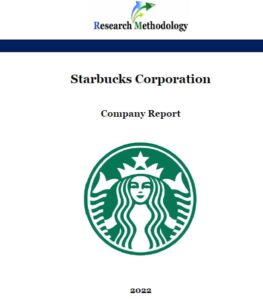
Founded in 1985 by Howard Schultz, Starbucks Corporation (NASDAQ:SBUX) currently operates in more than 34,000 stores in 84 markets according to its mission statement “to inspire and nurture human spirit – one person, one cup and one neighbourhood at a time”. Starbucks Corporation brand portfolio consists of Teavana, Tazo, Seattle’s Best Coffee, Evolution Fresh, La Boulange and Ethos and it sells coffee, tea, other beverages, and a variety of food products. There are two formats of Starbucks stores: company-operated and licensed stores. By the end of fiscal year of 2021, Starbucks had 17,133 (51%) company-operated stores and 16,700 (49%) licensed stores. As of October 2021, Starbucks had approximately 383,000 employees worldwide, including 245,000 employees in the US. The world’s largest coffeehouse chain refers to its employees as partners. Starbucks results for fiscal 2021 demonstrate the overall strength and resilience of the brand. Consolidated revenues increased 24% to USD29.1 billion in fiscal 2021 compared to USD23.5 billion in fiscal 2020, primarily due to business recovery from the COVID-19 pandemic. Also contributing to the increase was USD576 million of incremental revenue attributable to the extra week in fiscal 2021. Starbucks business strategy is associated with providing customers a Starbucks Experience, i.e. a ‘third place’ experience away from work and home, where people can have quality time with friends or alone enjoying quality coffee, beverages and fresh food. Currently, the company is following international business expansion strategy with a particular focus on China and Asia Pacific market segment. Starbucks is an acknowledged leader in the industry in terms of exploiting information technology and technological developments. The company has adapted mobile apps for the promotion of its brand and sales of products earlier than the competition. Starbucks app offers multiple features such as store locator, nutrition-based information and rewards program. Moreover, ‘MyStarbucks Signature’ initiative…
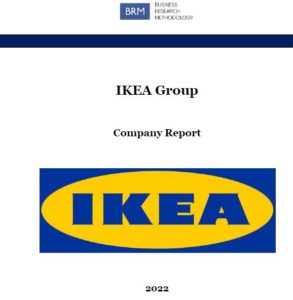
IKEA Group owned by Stichting INGKA Foundation is the largest furniture and home appliances manufacturer and retailer in the world. Founded almost eight decades ago in Småland, southern Sweden by Ingvar Kamprad, today IKEA Group has 11 franchisees operating in more than 500 locations in 63 countries (Annual Report, FY21). By the end of FY21 IKEA employed 225000 people worldwide, an increase of 8000 people compared to the previous year. The world’s largest furniture retailer offers nearly 12000 products and develops approximately 2000 new products each year. In FY21 the company generated total operated income of EUR 25.6 billion, an increase of 8.5% compared to the previous year. Net profit for the year amounted to EUR 1.4 billion (Annual Report, FY21). IKEA’s vision is “to create a better everyday life for the many people” and the company follows an extreme cost leadership business strategy along with new product development strategy to realize this vision. International market expansion strategy also represents an important element of IKEA business strategy. Leadership style exercised to manage the home improvement and furnishing chain can be branded as leading by example, as set by the late founder of the business Ingvar Kamprad. Furthermore, the company has integrated the principles of frugality and intangible employee motivation into its leadership practices. The Swedish furniture chain has devised a unique and complicated organizational structure designed to pay minimum taxes. IKEA possesses a number of noteworthy strengths such as market leadership, ownership and efficient application of democratic design concept and solid financial position of the business. At the same time, the global furniture retailer has serious weaknesses as well. These include weak presence in Asia, difficulty to sustain the competitive advantage and the lack of flexibility of the business due to its large size. IKEA Group Report contains the application…
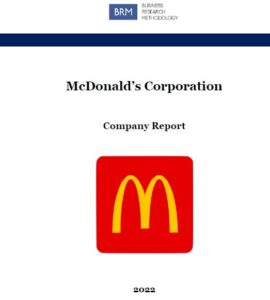
McDonald’s Corporation is a global fast food chain that serves more than 70 million customers in 119 countries employing about 200,000 people. McDonald’s operates two types of restaurants – company-owned and franchised restaurants with about 93% of restaurants belonging to the latter category (Annual Report, 2021) McDonald’s had disappointing financial results in 2014 with a sales growth of only 1% and a decline of operating income of 8%. Steve Easterbrook, McDonald’s Chief Brand Officer was promoted as the new CEO and President effective from March 1, 2015 to turn around the business. The list of major changes introduced by Steve Easterbrook includes reducing the use of antibiotics in chicken and massively restructuring the corporation, along with introducing changes in the menu. The turnaround efforts of the new CEO Steve Easterbrook proved to be effective with the company shares hitting record by the third quarter of 2015. However, Mr. Easterbrook was fired in 2019 due to breaching McDonald’s employee code of conduct through engaging in consent sexual relationship with female employees. New President and CEO Mr. Chris Kempczinski has proved to be effective so far, with McDonald’s emerging from COVID-19 pandemic stronger than before. In 2021, global comparable sales increased 17.0%, primarily due to strong sales performance across all segments from continued execution of the Accelerating the Arches strategy, as well as recovery from the impact of COVID-19 in the prior year. In 2021 consolidated revenues increased 21% (18% in constant currencies) to USD23.2 billion. At the same time, the fast food giant has certain weaknesses as well. These include the menu still consisting of primarily unhealthy food and the declining brand image of McDonald’s. Furthermore, the fast food chain has very high employee turnover and the company has attracted increasing negative publicity in the past few years. McDonald’s Corporation Report…
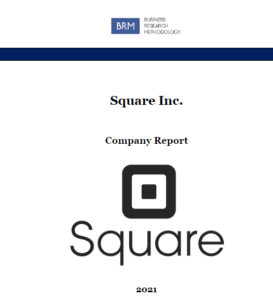
Square Inc. is a global financial services and digital payments company based in San Francisco, USA. Founded by co-founder of Twitter, Jack Dorsey and Jim McKelvey in 2009, the company started with selling card readers that enabled small businesses to accept credit cards. Since that time Square has evolved into an international financial services and mobile payments platform providing an ecosystem of integrated products and services. In 2019 Square processed USD106.2 billion of Gross Payment Volume (GPV), which was generated by nearly 2.3 billion card payments from 407 million payment cards. At the end of 2019, Square point of sale ecosystem had over 180 million buyer profiles and approximately 230 million items were listed on Square by sellers. The financial unicorn generated net income of USD375.4 million in 2019, employing 3,875 people full-time. Square business strategy is based on simplification of financial transactions and the company has developed an expanding ecosystem of products and services. The finance sector disruptor has certain business advantages such as the first mover advantage and strong leadership by CEO Jack Dorsey. At the same time, there are certain weaknesses associated with Square. These include lack of global presence, high employee turnover and dependence on payment cards networks. The payments company faces a set of potential threats as well such as increasing complexity of the business, cyberattacks and emergence of new competitors. Leadership style at Square can be classified as purpose-driven leadership and the payments company has a purpose to make it easier for everyone to participate in the economy. Furthermore, Square leadership appreciates teamwork and focuses on benefiting from team effort to a great extent. Square Inc. Report contains the application of the major analytical strategic frameworks in business studies such as SWOT, PESTEL, Porter’s Five Forces, Value Chain analysis, Ansoff Matrix and McKinsey 7S…
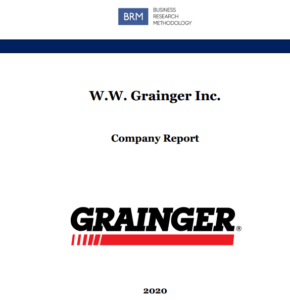
Founded in Illinois, US in 1928, W.W. Grainger Inc. is a B2B distributor of maintenance, repair and operating (MRO) products and services. The global industrial supply company has more than 3,5 million customers and about 25000 employees worldwide. (Fact Book, 2020). The global MRO products distributor works with approximately 5000 suppliers internationally. In 2019 Grainger generated revenues of USD 11,2 billion, 3% increase compared to the previous year (Annual Report, 2019). Grainger pursues differentiation business strategy. Specifically, the B2B distributor differentiates on the basis of products, offering the widest range of MRO product categories. Grainger’s use of differentiation business strategy also extends to differentiated sales and services. The company delivers its products with high level of speed and convenience and employs highly qualified sales representatives with deep technical knowledge. Grainger has hierarchical organizational structure and its organizational culture is based on diversity and inclusiveness and value for technology and innovation. Moreover, focus on teamwork can be highlighted as one of integral components of Grainger organizational culture. Business development strategy for the B2B distributor integrates market penetration, product development and market development strategies. The industrial products distributor immensely benefits from the economies of scale and the company has an extensive experience and knowledge in selling MRO products. At the same time, Grainger has certain weaknesses that can have negative implications on long-term growth prospects of the business. High level of indebtness is a major issue for the company and as of December 2019, Grainger’s consolidated debts amounted to USD 2,4 billion. Moreover, with total 72% of revenues generated in the US in 2019 (Fact Book 2020), the B2B distributor is over-dependent on the home market in the US. W.W. Grainger Inc. Report contains the application of the major analytical strategic frameworks in business studies such as SWOT, PESTEL, Porter’s Five Forces,…
